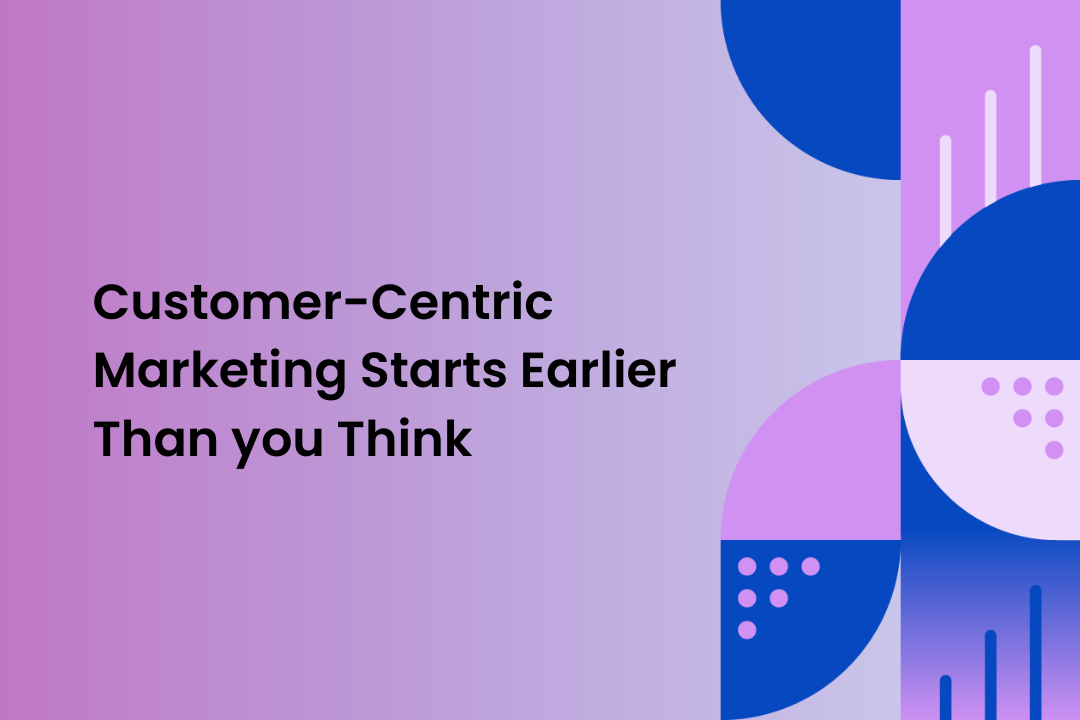Marketing: The Original Customer-Centric Business Discipline
Marketers must create messages that connect with people, helping those people understand how our products and services can help. At DISQO, We take pride in our ability to put ourselves in another person’s shoes, understanding their challenges and knowing how to communicate with them. In that way, marketing is the ultimate customer-centric business discipline. Marketing embraced customer-centricity before the term existed!
Marketers today have no excuse not to be customer-centric because we have access to so much data about the people we serve. This data creates a rich picture of how those people are responding to the messages we put in front of them. Website metrics, social media engagement, customer satisfaction surveys, and email metrics show us what’s working and what’s not. We constantly test our messages, launching new concepts, learning from the data we receive, and iterating to get it just right.
Yet unsuccessful and downright cringey marketing campaigns abound. 2020 was a particularly difficult year for hitting the right notes in marketing. Who could predict the impact of the COVID-19 pandemic in December 2019, when designing a March 2020 campaign? Many companies were unable to pivot in response to this rapid change. This resulted in unanticipated blowback to ads like Progressive’s otherwise innocent karaoke bar commercial, which fell victim to a post-COVID air date. Then there are the tone-deaf post-COVID campaigns like McDonald’s much-lambasted campaign featuring a socially distanced “Golden Arches” logo treatment.
Launching and Learning: Techniques and Risks
There’s significant risk involved in marketing’s traditional “launch and learn” methodology, especially for companies as big as Progressive and McDonald’s. The results of an ill-timed, tonally questionable campaign can be disastrous. There’s a reason why CMOs are the shortest-tenured title in the C-Suite. When marketing messages fall flat, it’s evidence that marketers have failed at their primary role of connecting with the company’s target markets.
Marketers have tools and workflows to reduce the risk of a disastrous campaign, but all of them rely on putting real messages in front of real audiences. None of them would have prevented the situations described above.
For example, a marketing team may decide to try a new campaign in one smaller market before a wider release. This market may be defined by its geography, by its channel (search engine ad, social media post, and so on), or some combination of both. This is a good way to see how a campaign will work “in the wild” before scaling it up with larger media buys, production costs, and so on. Trial runs in test markets can lower the total cost and risk of a campaign, but they can’t entirely prevent misfires. With the rise of social media and global communications platforms, a truly misfired campaign is no longer isolated to this test market. Witness the McDonald’s ad above. It was part of a Brazilian campaign, and yet the groans it elicited came from around the world when it was shared beyond the test market for which it was intended.
Reducing the Risk of Misfires with Agile Research
The best way for marketers to reduce the impact of an unsuccessful campaign is to not run it at all. And the only way to prevent running such a campaign is to ask people what they think before investing in design and production. Before you conjure up visions of carefully resourced and designed focus groups that will slow your process to a crawl, know that today’s online research methods provide an open door to perspectives from people in your target markets in ways that are easier than ever before. Feedback Loop’s agile research platform is designed to take the heavy lifting out of research design, execution, and reporting so your team doesn't have to slow down in order to get the feedback they need.
Think of agile research as a way to inject feedback into the processes you already have, while saving you the time (and heartbreak!) associated with a misfired campaign. Here are some tips to get you started on the road to a successful, customer-centric campaign that takes full advantage of rapid consumer feedback:
- Ask for feedback as early as possible. Kicking around taglines? Want to know what visuals people respond to? Put examples in front of them and learn which direction you should pursue.
- Offer quick mockups to elicit richer responses from people. A picture is worth a thousand words, even if it’s just a quick mockup or an unbranded version of an ad creative. People will have an easier time responding to a visual stimulus than to a description of that stimulus. That’s why Feedback Loop offers access to quick mockup services as part of our platform subscription.
- Learn if you’ve chosen the right words to be properly understood. Vocabulary missteps are all too common, especially in technical fields like finance and healthcare. Take the time to test and make sure people can understand the terminology you’re using in your campaign.
- Feedback is the ultimate tie-breaker. Opinions can run hot during the creative process, and absent of a fresh perspective, the best debater will win… but not necessarily the best idea! When people on your team are divided as to which option to pursue, put it to the test with consumer feedback.
It’s true that people are always changing their opinions, but marketers have the ability to change alongside them. With the right combination of technology and process, you can stay in sync with opinion so your messages will resonate with consumers.
To find out how DISQO Experience Suite can help your campaigns resonate with your market, visit here!




